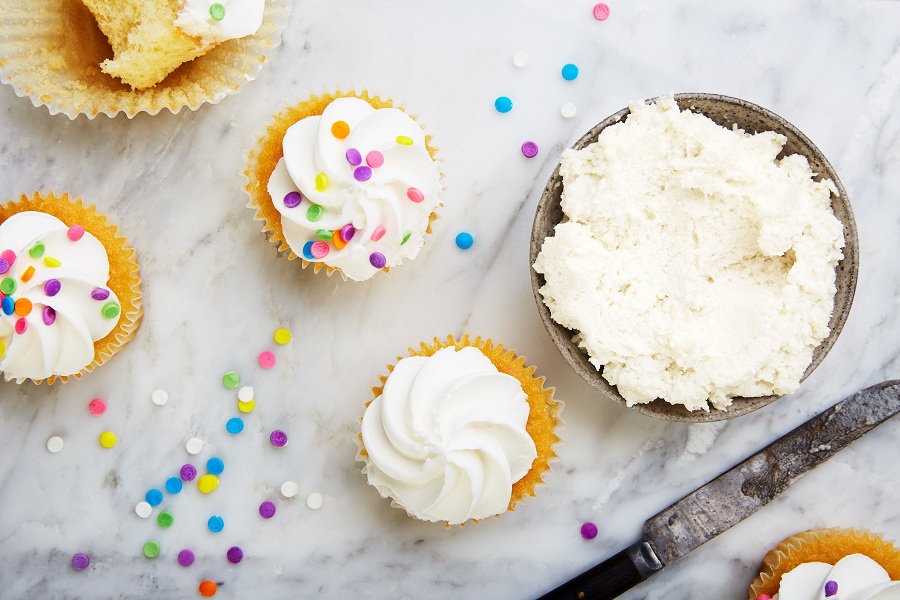Life without cakes and cupcakes would be miserable for vegans, so they look for solutions to animal-based comfort foods.
Cake and cupcake frosting is delicious when made with actual dairy products like cream and butter. But no self-respecting vegan will be caught compromising their principles by indulging in eating animal products.
The question then is whether you can make an alternative plant-based frosting that tastes delicious. Another question is how to make vegan frosting that is the ‘cherry on the top of the cake,’ so to speak.
Discover whether vegan frosting is possible, whether it is mouth-wateringly delicious, and how you can spoil yourself without putting your principles at risk.
Contents
Is Vegan Frosting Possible?
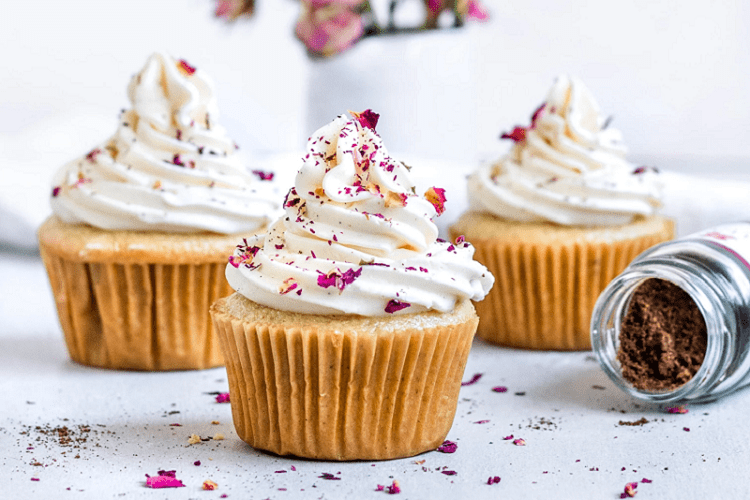
The primary difference between traditional and vegan frosting is that traditional frosting uses dairy products.
If you can replace butter, cream, and milk with vegan substitutes, you can make a vegan frosting.
Even if you cannot get hold of vegan butter at a local store–you can make your own.
There are also several substitutes for cows’ milk and cream. You can make vegan frosting with rice milk, for example, or use another dairy milk substitute like coconut milk.
The joy of being vegan is that people always look for solutions and find them in substitute plant-based products. Making vegan frosting is no different. If you look hard enough for answers, you will find them.
As it turns out, you’ve come to the right place to find out all you need to know about vegan frosting, including whether it is delicious or not.
Can It Be As Tasty?
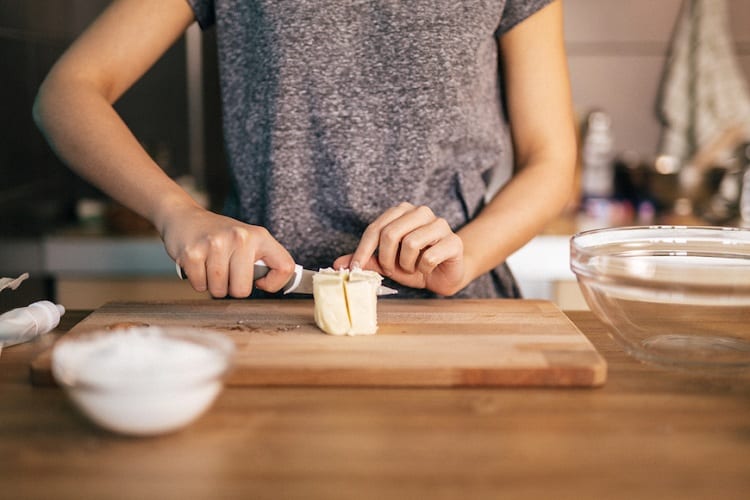
Of course, it is possible for the vegan frosting to be tasty. Many vegans create their frosting with a lot of experimentation to match their taste preferences.
Practice truly does create perfection, and the deliciously delicious vegan frosting is the outcome of the curious.
As it may happen so, if you are unable to find vegan butter at your local store, try your hand at creating vegan butter from scratch on your own.
It may just as well make the activity that much more fun and informative (See recipe for vegan butter at the end of this article).
Step-By-Step Guide For Making Vegan Frosting
Fellow vegans do not dismay. I bring great news!
There are by far many frosting options out there for you. Best of all, we have tried and tested them.
The frosting recipes you are about to read below are delectable and straightforward. We have included the pros and cons of each frosting for your further enlightenment.
Furthermore, you can anticipate these recipes to yield enough to frost the top of an 8-inch round cake!
Vegan Buttercream Frosting

This recipe is a popular American-style, easy-to-make vegan frosting.
Ingredients
- 1 1/2 cups vegan butter
- 1 Tbs vanilla essence
- 2 – 4 Tbs vegan milk (oatmeal milk is the better option)
- 6 cups of sifted powdered sugar
Method
- Use a mixer at a medium speed for approximately two minutes to aerate the butter. This approach will make for a fluffy frosting.
- Add your vanilla essence and milk.
- Gradually mix in the powdered sugar at a lower speed until you reach the correct consistency. Depending on the consistency, add in an extra bit of milk or powdered sugar to achieve the desired texture.
Yield
This recipe is enough to frost a two-layered, 9-inch cake or 24 cupcakes.
Lemon frosting with vegan butter

This recipe is mouthwatering for anyone who loves a little lemon zing in their frosting.
Pros
This one is a considerable winner! The frosting mixes well, holds its shape, and is amazingly thick and creamy.
Cons
Initially, there was quite a margarine flavor. However, resting this frosting overnight in the fridge seemed to have helped achieve that lemony taste.
Ingredients: (blend)
- 2 1/2 cups of powdered sugar
- 5 – 6 Tbs vegan butter
- 2 Tbs lemon juice
Lemon frosting with homemade vegan butter

If you’re up for it–try a lemon frosting with your DIY vegan butter for an extra touch of love.
Pros
The frosting didn’t taste like margarine but didn’t turn into creamy butter.
Cons
This recipe turned out glazy. The nutritional yeast in the homemade butter was detectable, which was not pleasant.
The idea is to make the frosting less savory and sweeter. The shape, unfortunately, at room temperature, did not hold.
Ingredients: (combine in a food processor)
- 2 cups powdered sugar
- 5 Tbs homemade vegan butter
- 3 Tbs lemon juice
- Pinch of salt
- Refrigerate until well set
Ermine frosting with vegan butter
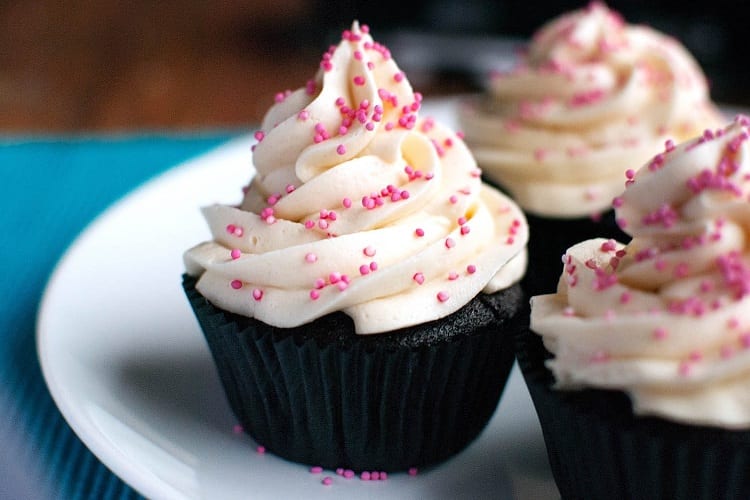
An ermine frosting is as tasty as it sounds and comes with its pros and cons.
Pros
This frosting is delectable and has an all-around beautiful texture. What is nice about this frosting is the margarine was barely noticeable.
From a personal perspective, rice and almond milk will be your best bet for this frosting.
Cons
It is a time-consuming recipe and requires some patience.
Ingredients
- 5 Tbs flour
- 1 cup sugar
- 1 cup rice milk
- 8 Tbs vegan butter
METHOD
- Whisk dry ingredients. Add rice milk on medium heat in a saucepan to a pudding-like texture. Remove to cool.
- Separately, whip the butter until light and fluffy. Proceed to add the flour mixture to the butter until desired texture is achieved.
- Refrigerate
Chocolate ganache
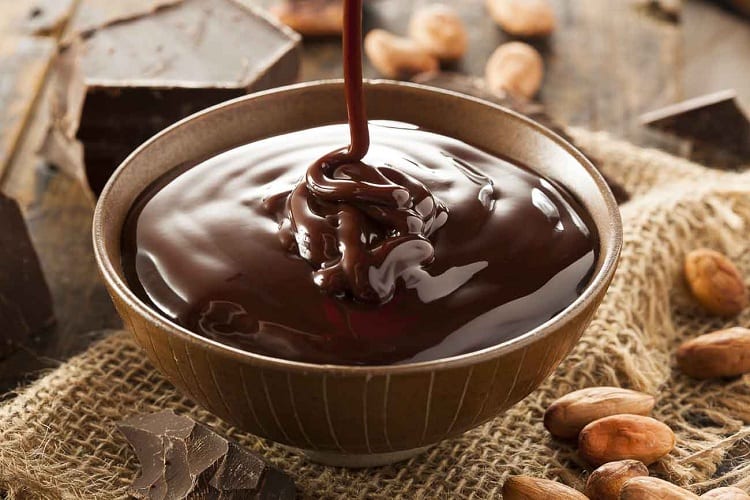
Who doesn’t love the rich decadence of chocolate?
Pros
An all-time favorite! This frosting is pure chocolaty richness, and it is so simple to make.
Cons
The coconut flavor is apparent. It is, however, best that you use full-fat coconut milk.
Ingredients
- 1 cup whole fat coconut milk
- 2 cups chopped dairy-free dark chocolate
- A pinch of salt for flavor or a dash of vanilla essence
method
- Heat the coconut milk in a saucepan until its’ surface starts to wobble.
- Add the chocolate to the heated milk to melt.
- Optionally, dash a bit of vanilla essence or a pinch of salt to taste.
This frosting can be used immediately as a glaze, or you may refrigerate it and use it as a spreadable frosting.
The Winner
The Ermine frosting takes the cake here! It is truly a magnificent and delectable frosting. More like something you only ever dream about.
Vegan Butter
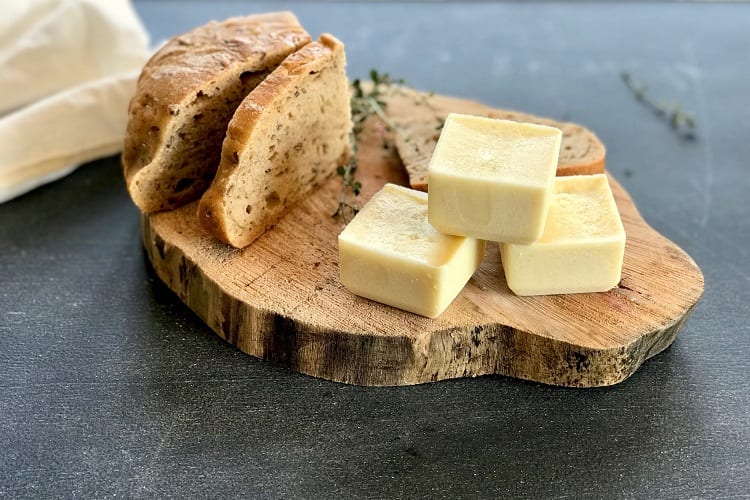
Making your own vegan butter enhances any frosting flavor because it includes a lot more love.
Ingredients
- Almond flour is advisable for the best buttery flavor and emulsification.
- Non-dairy milk–also because of its emulsification properties and rich, creamy flavor.
- Nutritional yeast is excellent for a buttery depth of flavor but be cautious about using too much.
- Salt to taste. Salt makes everything better!
- Apple cider vinegar–as the recipe needs some acid to balance the flavors. Apple cider vinegar is also milder than many other prevalent culinary acids.
- Refined coconut oil – for setting. Note that the coconut oil must be refined (i.e., flavorless and odorless). Without it, the butter will stay liquid, so it is absolutely essential.
- Olive oil, avocado oil, or canola oil – essential for texture and spreadability.
- Turmeric – for color. This spice is the only ingredient you can safely omit.
This vegan butter recipe takes a couple of minutes to make and a little time to set.
Here’s how it’s done
Step 1 – Except for the oils, add all the ingredients to a blender and blend until smooth.
Step 2 – Once you have the correct consistency, add your coconut and olive oil. Blend again until well incorporated, light, and airy.
Step 3 – Pour contents into a sealed container and place them in the fridge to set.
Success tips
- Measure everything carefully and don’t exclude or change anything (except the turmeric, which can be safely left out if you don’t have it because it is only used for color).
- You must use refined coconut oil. It is sometimes labeled as “deodorized.” It is essential only to use refined virgin oil or coconut oil. If you use unrefined products, your butter will smell and taste of coconut.
- If you aren’t sure if yours is ok, check the label. It will say somewhere or give it a sniff and taste. If there is any hint or taste of coconut, the product is not refined and is not suitable for the recipe.
- Ensure that the coconut oil is at room temperature and in liquid form before adding it to the rest of the ingredients. Do not add it while it is hot.
- Blend until a smooth consistency and on low heat. Attaining a smooth texture while hot is vital as if the butter liquid becomes too hot, the substance will separate. If the liquid begins to become too warm, lower the heat or stop the blender for a few minutes to cool down.
- Let it set thoroughly before using and store in the refrigerator. Before using the butter, let it soften to room temperature for ultimate creaminess and ease of spreading.
Slather this vegan butter on everything!
Store it
- It is best to pour and store your butter in tightly sealed containers. For example, keep it in a small or shallow mason jar.
- Wondering how long vegan butter lasts? By storing the butter in the refrigerator, your vegan butter can keep for about two weeks. However, this all depends on the sort of milk used. Store-bought milk will allow your butter to last longer as appose to homemade milk. That is because store-bought milk contains preservatives, and homemade milk does not.
- If you prefer to make your vegan butter in bulk (bigger batches) as appose to a quantity of about two weeks, this vegan butter freezes very well. Bulk freezing can last you up to about three months.
- Always freeze your butter in an airtight freezer-safe container, whether you freeze it immediately after pouring it into the container or at a later stage; both options work.
Conclusion
Now you know that you can make vegan frosting that is delicious–test these recipes for yourself.
Make your natural vegan butter because a little extra love goes a long way toward making the best vegan frosting possible.
Resources:

